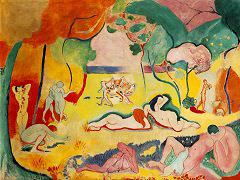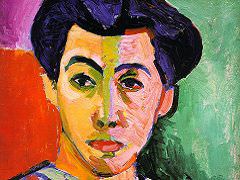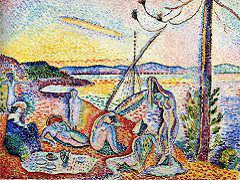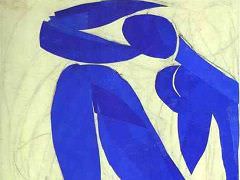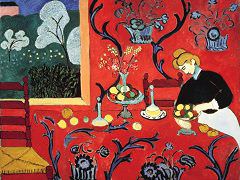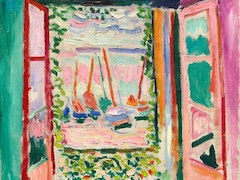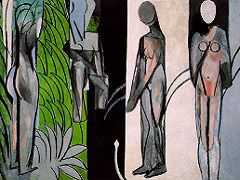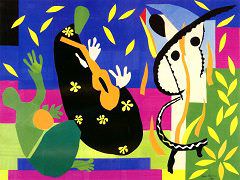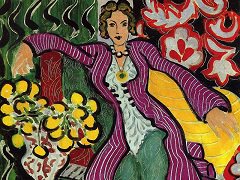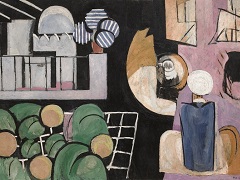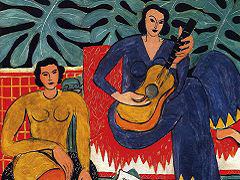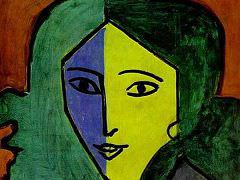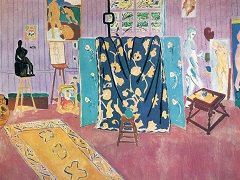The Goldfish, 1912 by Henri Matisse

Goldfish were introduced to Europe from East Asia in the 17th century. From around 1912, goldfish became a recurring subject in the work of Henri Matisse. They appear in no less than nine of his paintings, as well as in his drawings and prints. The Goldfish, 1912 belongs to a series that Matisse produced between spring and early summer 1912. However, unlike the others, the focus here centers on the fish
The Goldfish immediately attract our attention due to their color. The bright orange strongly contrasts with the more subtle pinks and greens that surround the fish bowl and the blue-green background. Blue and orange, as well as green and red, are complementary colors and, when placed next to one another, appear even brighter. This technique was used extensively by the Fauves, and is particularly striking in Matisse's earlier canvas Le Bonheur de vivre. Although he subsequently softened his palette, the bold orange is reminiscent of Matisse's fauvist years, which continued to influence his use of color throughout his career.
But why was Henri Matisse so interested in goldfish? One clue may be found in his visit to Tangier, Morocco, where he stayed from the end of January until April 1912. He noted how the local population would day-dream for hours, gazing into goldfish bowls.

In a view consistent with other Europeans who visited North Africa, Matisse admired the Moroccans' lifestyle, which appeared to him to be relaxed and contemplative. For Matisse, the goldfish came to symbolize this tranquil state of mind and, at the same time, became evocative of a paradise lost, a subject - unlike goldfish - frequently represented in art. Matisse was referring back to artists such as Gauguin, who painted during his travels to Tahiti.

